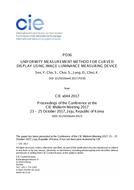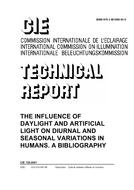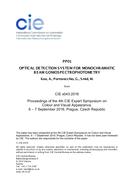Click here to purchase
Increasingly, UV-C (100 nm – 280 nm) mediated air disinfection (principally254 nm radiant energy from low-pressure mercury lamps) is being used as abuilding environmental control to provide human protection from transmissionof airborne pathogens such as tuberculosis bacteria, influenza viruses andother aerosolized agents. Some uses of UV-C energy require direct exposureof the volume room air in a horizontal plane directly above the heads ofoccupants. In these settings there is the potential of reflected or scattered UVCradiation that could result in human exposure. Known side effects ofoverexposure to UV-C radiation include transient corneal and conjunctivalirritation (photo-keratoconjunctivitis) and skin irritation (erythema), whichdisappear within a 24 – 48 hour period, not currently known to produce lastingbiological damage. The ACGIH and ICNIRP threshold limit for 8 hourcontinuous exposure to UV-C radiation at 254 nm is 6 mJ*cm-2 (60 J*m-2), andproper installation of well engineered UV-C systems meet this criteria.However, there have been incidents of poor installations resulting inaccidental UV-C overexposures. General statements that all UVR iscarcinogenic have raised safety concerns of open air UV-C systems.Although, from basic biophysical principles, UV-C radiation is carcinogenic forthe same reason that it is an effective germicidal agent, the attenuationprovided by the stratum corneum and epithelial tissues of the skin greatlyreduces the risk relative to UV-B radiation. UV germicidal irradiation can besafely and effectively used for upper air disinfection without a significant riskfor long term delayed effects such as skin cancer.
Product Details
- Published:
- 02/01/2010
- ISBN(s):
- 9783901906817
- Number of Pages:
- 23
- File Size:
- 1 file , 300 KB


